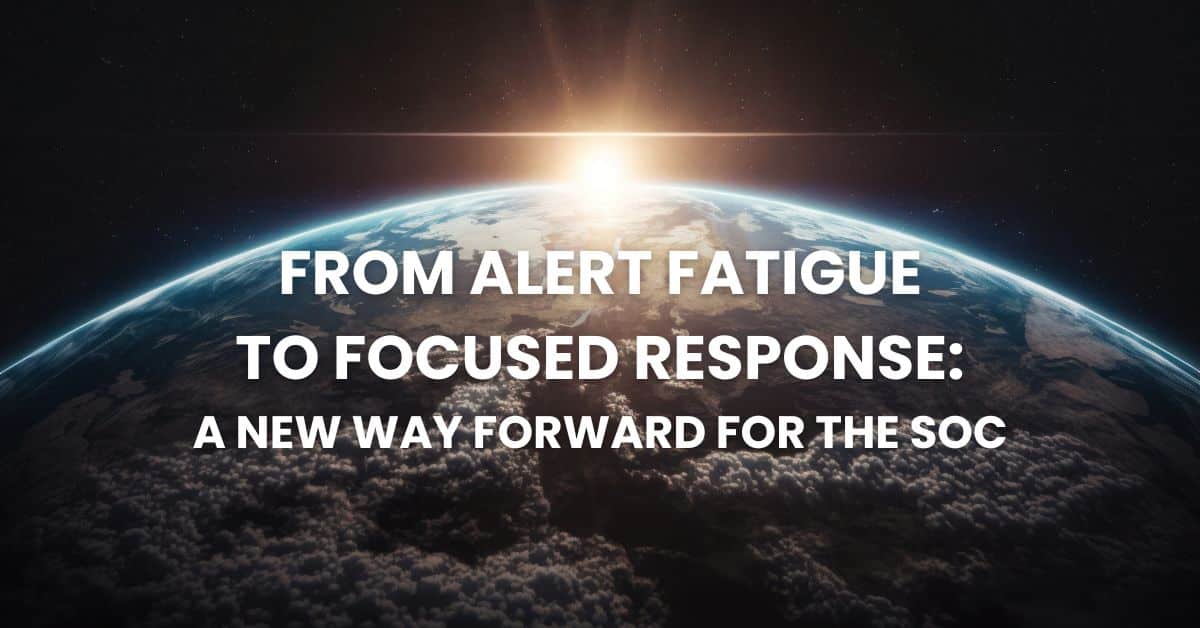We’re all exhausted—both by the problem and by hearing about it. False positives and overwhelming alert volume have long plagued security operations. And despite years of innovation, solutions have remained elusive.
Alert volume. Alert fatigue. SOC burnout.
This persistent problem puts security teams in a tough position:
- Enable a broad set of detections to catch possible threats—knowing it will lead to high alert volume, false positives, and potential SOC burnout.
- Or, tune alerts tightly or disable noisy ones—risking blind spots and missing critical early indicators of an attack.
For CISOs and SOC managers, it’s a lose-lose scenario. And worse, the challenge is always shifting as the attack surface expands, adversaries evolve, and detection techniques multiply.
Adding more security tools and analytics often makes it worse, layering on even more data for analysts to triage.
The Real Answer: Evidence, Not Just Alerts
The solution isn’t finding the mythical “perfect alert” that only fires on true positives. It’s about automating the discovery of corroborating evidence that proves (or disproves) whether an alert points to a real threat.
If multiple pieces of evidence support the alert—its legitimacy is strengthened.
If no supporting data is found—it’s likely a false positive.
This is where Graylog 6.2 comes in.
Introducing A Smarter Way to Assess Risk
With version 6.2, Graylog enhances its Asset Risk Model, bringing greater precision to how risk of compromise is calculated—so you can focus on what matters most.
Recap: What Is Graylog’s Asset Risk Model?
Graylog Assets are an identity-construct for users and systems, recognizing that different log sources may reference the same “user” or “system” differently. The Asset Risk model was introduced last November, shifting triage from alert-based to asset-based. Instead of evaluating every alert in isolation, you focus on high-risk assets—users or machines—based on their composite risk score.
Each alert contributes to that score by factoring in:
- Severity of the detection method (e.g., correlation, outliers, ML anomalies)
- Environmental context
- Frequency and diversity of alerts
What’s New in 6.2?
Graylog 6.2 adds Adversary-Informed Defense to the model—introducing threat campaign awareness:
- Alerts are enriched with knowledge of adversary campaigns.
- Alerts linked to known threat campaigns are assigned higher risk.
- As more alerts from the same campaign surface—risk increases exponentially.
This creates an orthogonal signal, linking related evidence across both assets and threat campaigns, delivering a higher fidelity risk score.
Why This Matters
Collapsing individual alerts into asset-centric risk scores delivers immediate operational benefits:
✅ Less Time on False Positives
When a single alert fires but no corroborating activity is found, the asset risk remains low—reducing time spent chasing noise.
✅ No More “Sophie’s Choice”
The burden of tuning every rule to perfection is reduced. Graylog automatically groups related findings—even across assets—making alert triage more manageable and reducing the risk of blind spots.
✅ Faster Investigations
The initial triage questions—“who, what, where”—are answered automatically by the asset context and associated evidence, letting analysts jump straight into deeper investigation.
The New SOC Efficiency Model
The triad of:
- Asset Risk
- Exposure Awareness
- Adversary-Informed Defense
delivers the precision, automation, and prioritization that modern security operations demand.
When paired with Graylog’s embedded investigation guidance and automation, the result is a leap forward—whether you’re just starting your security journey or running a mature SOC.


